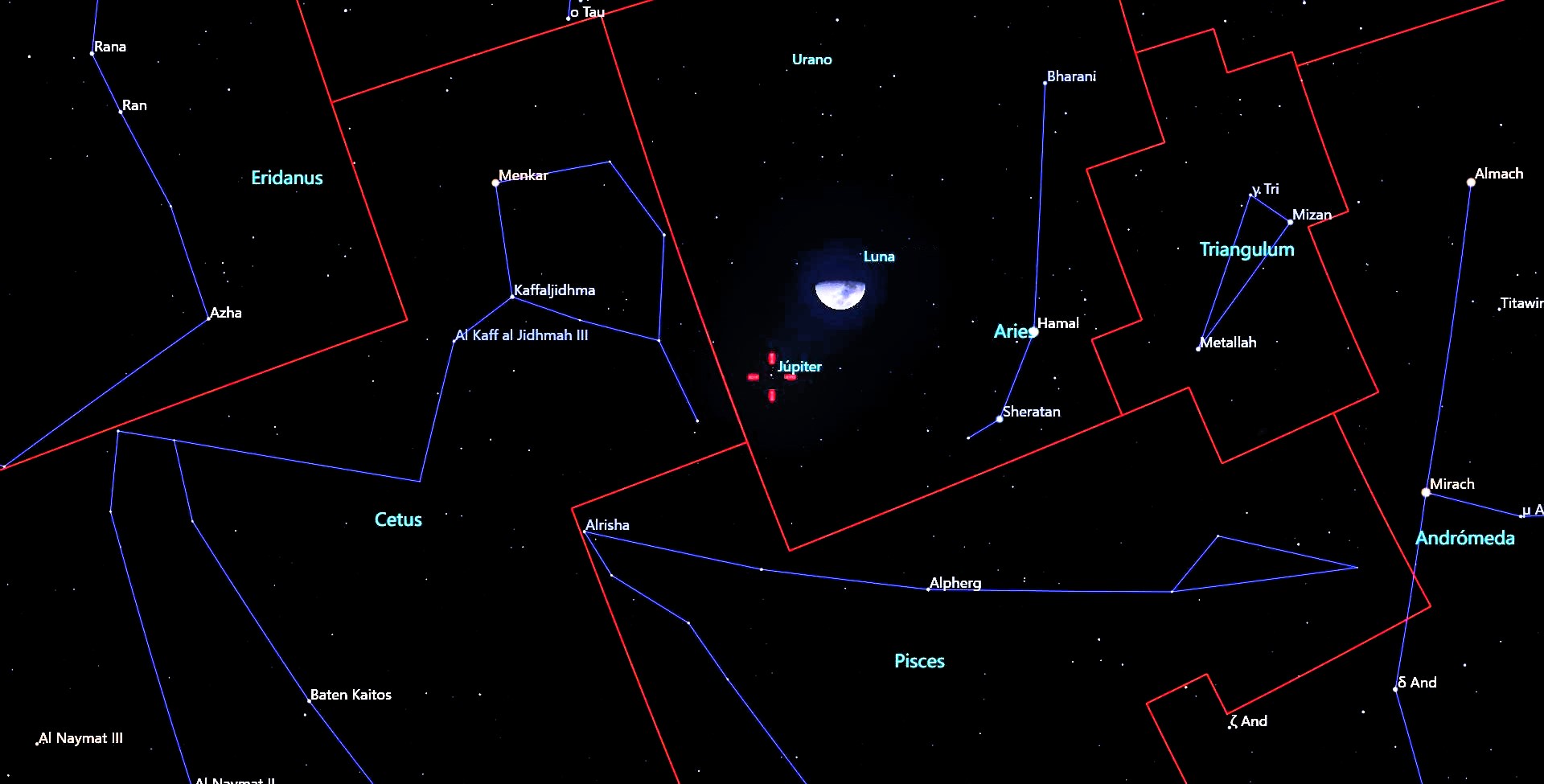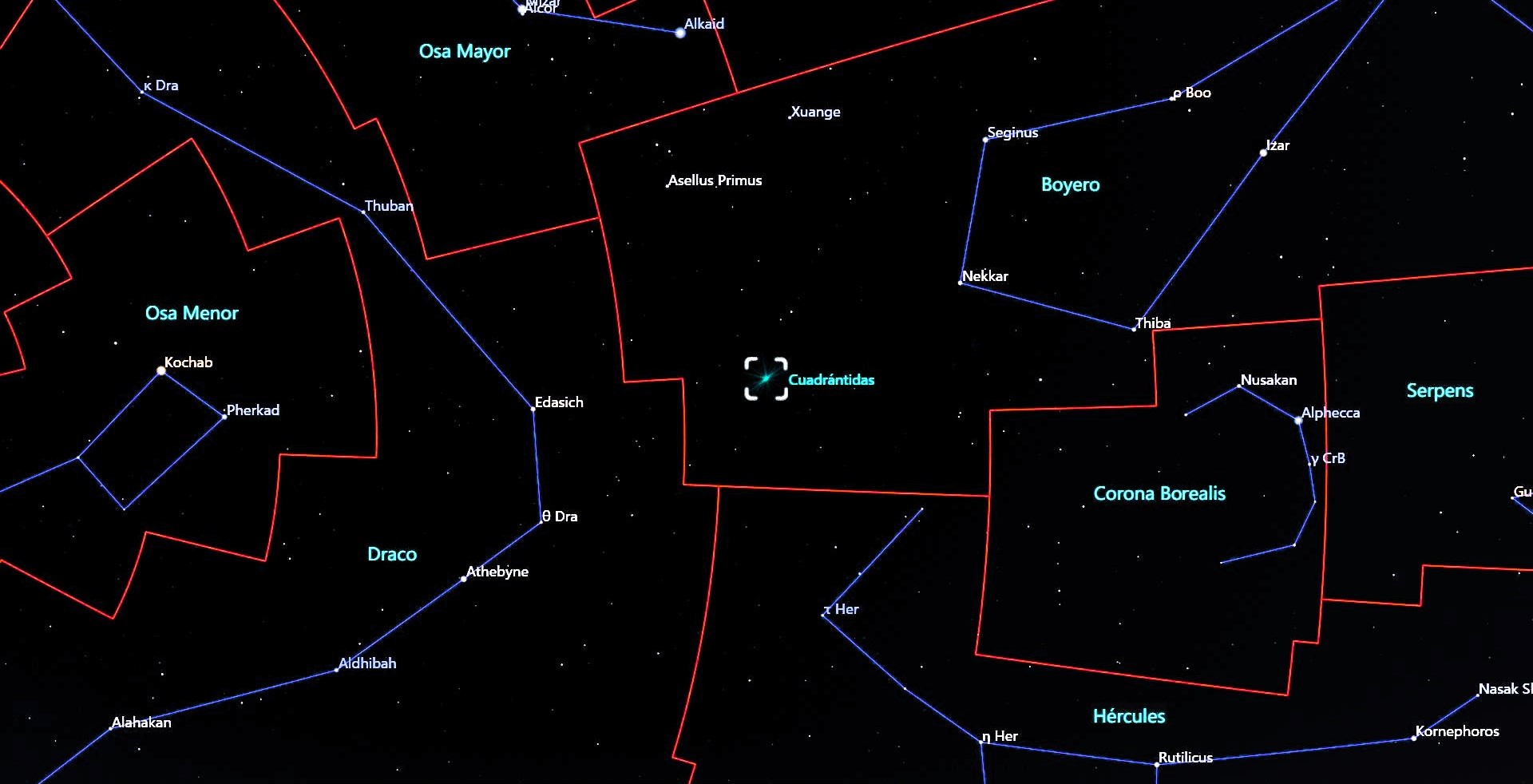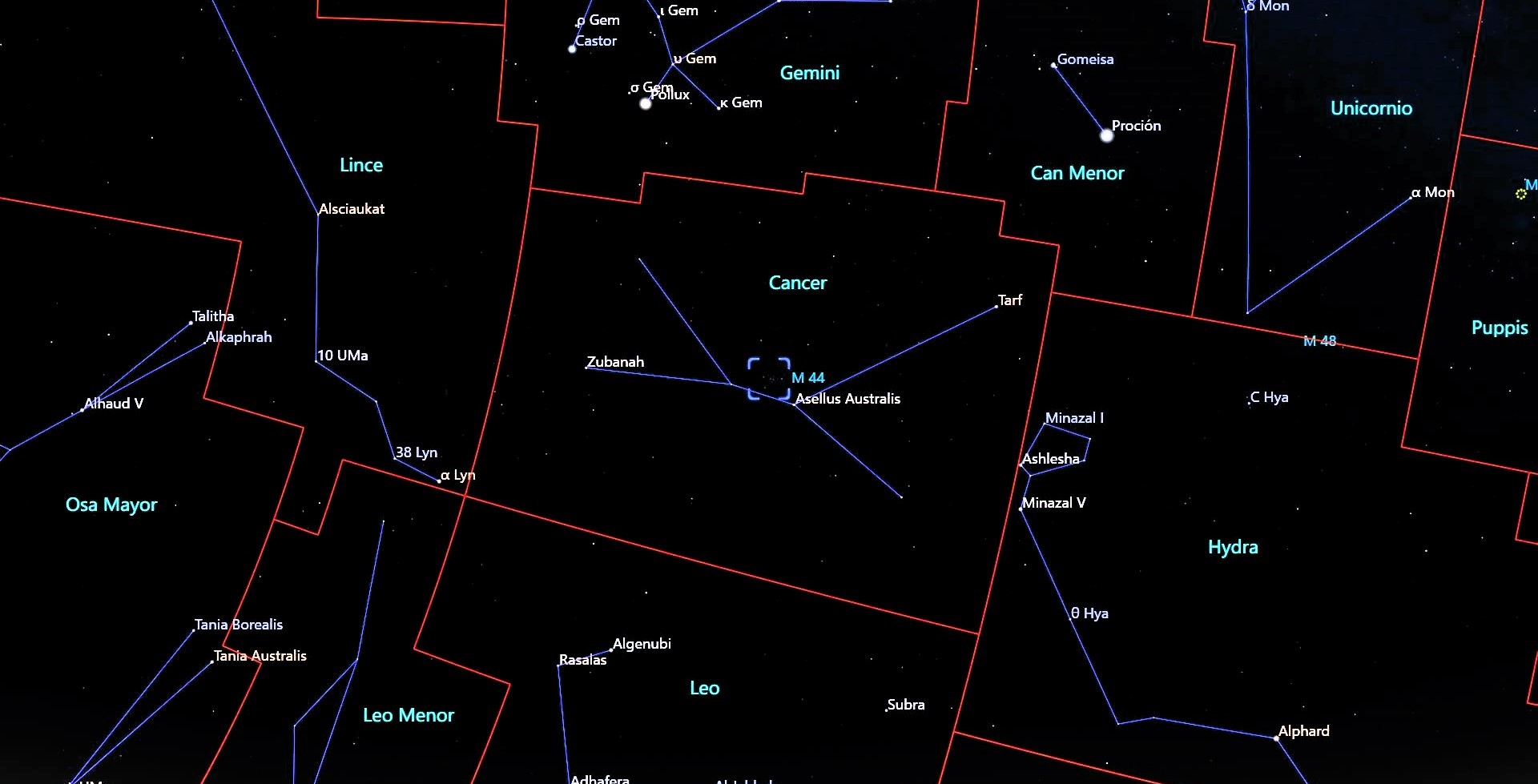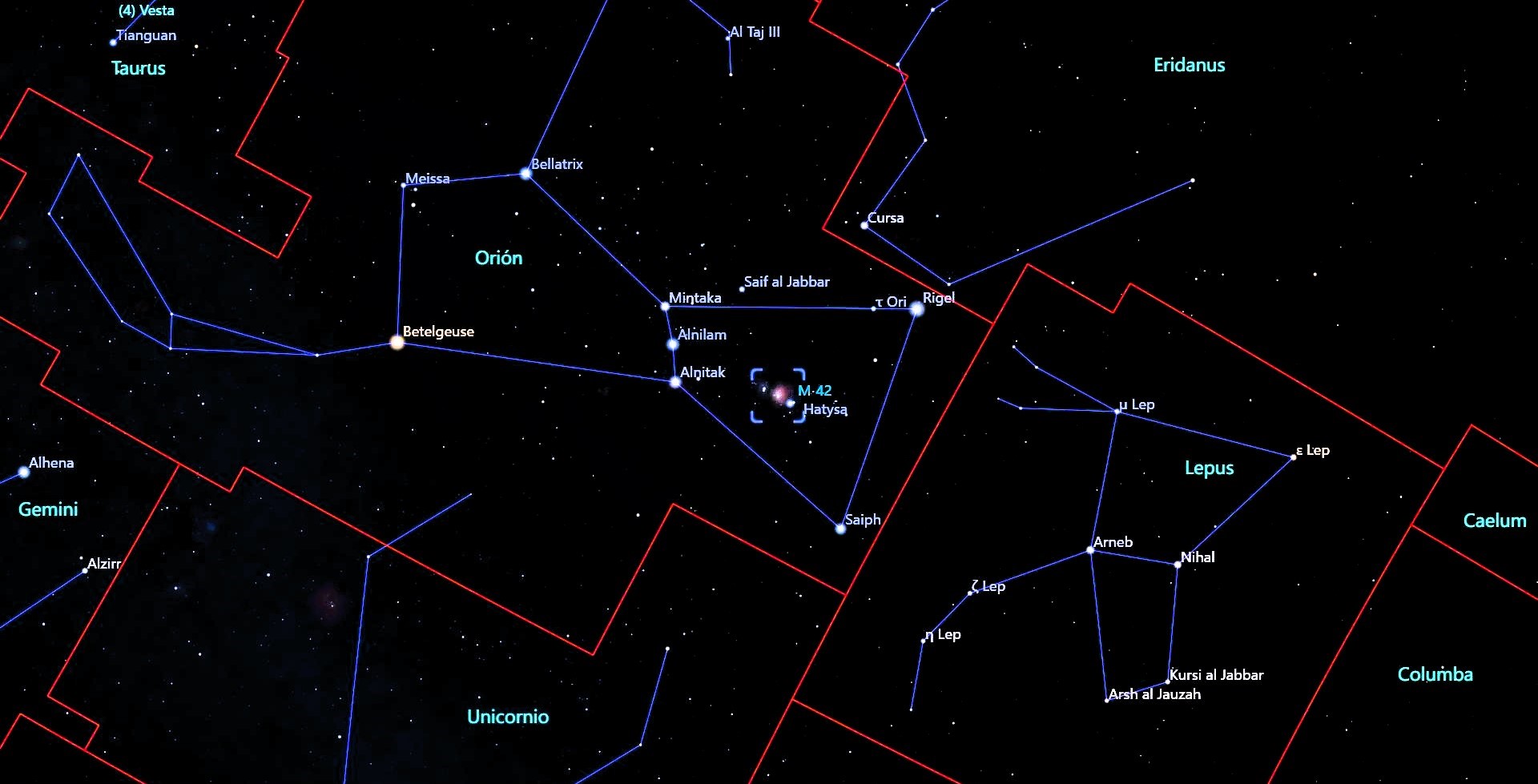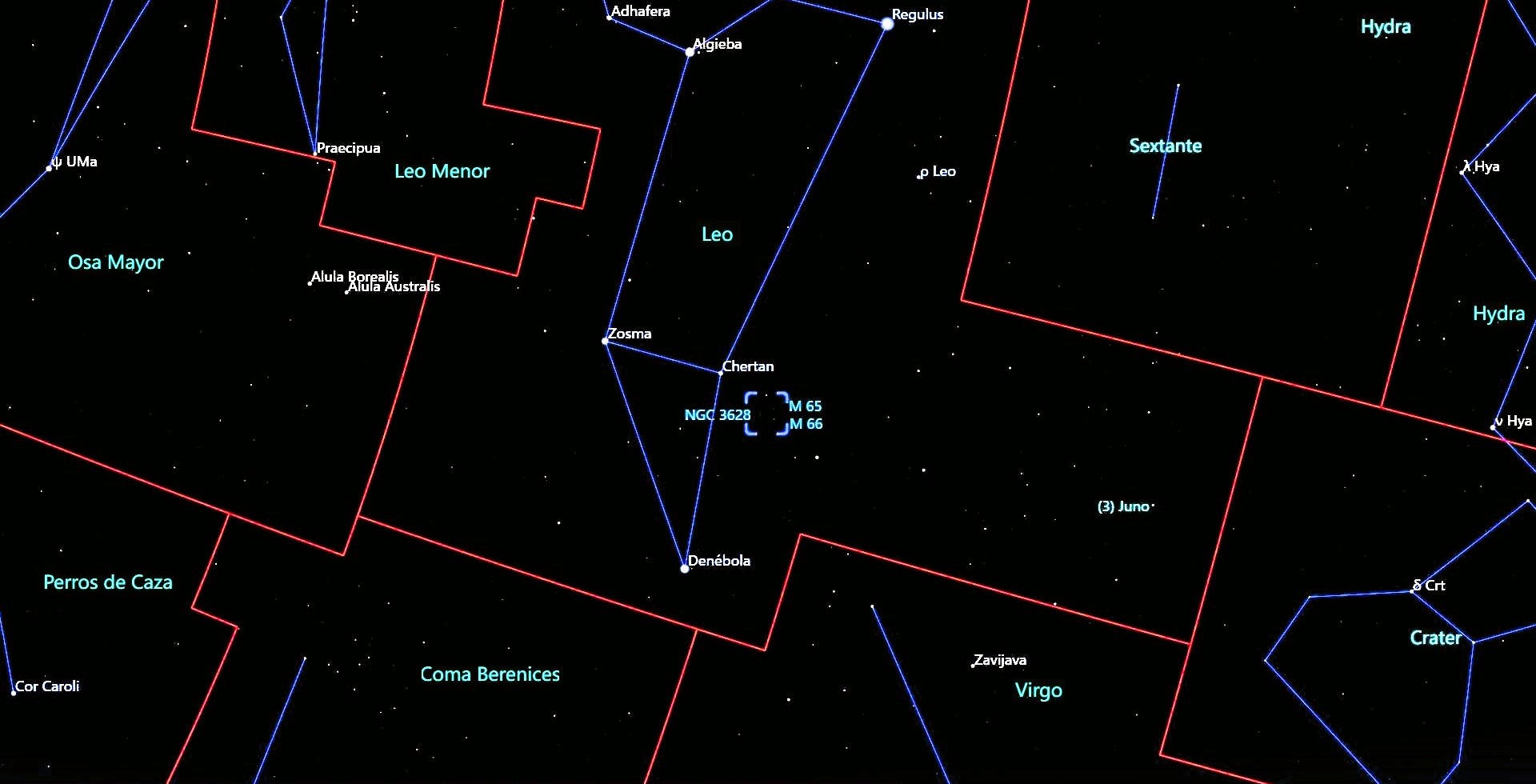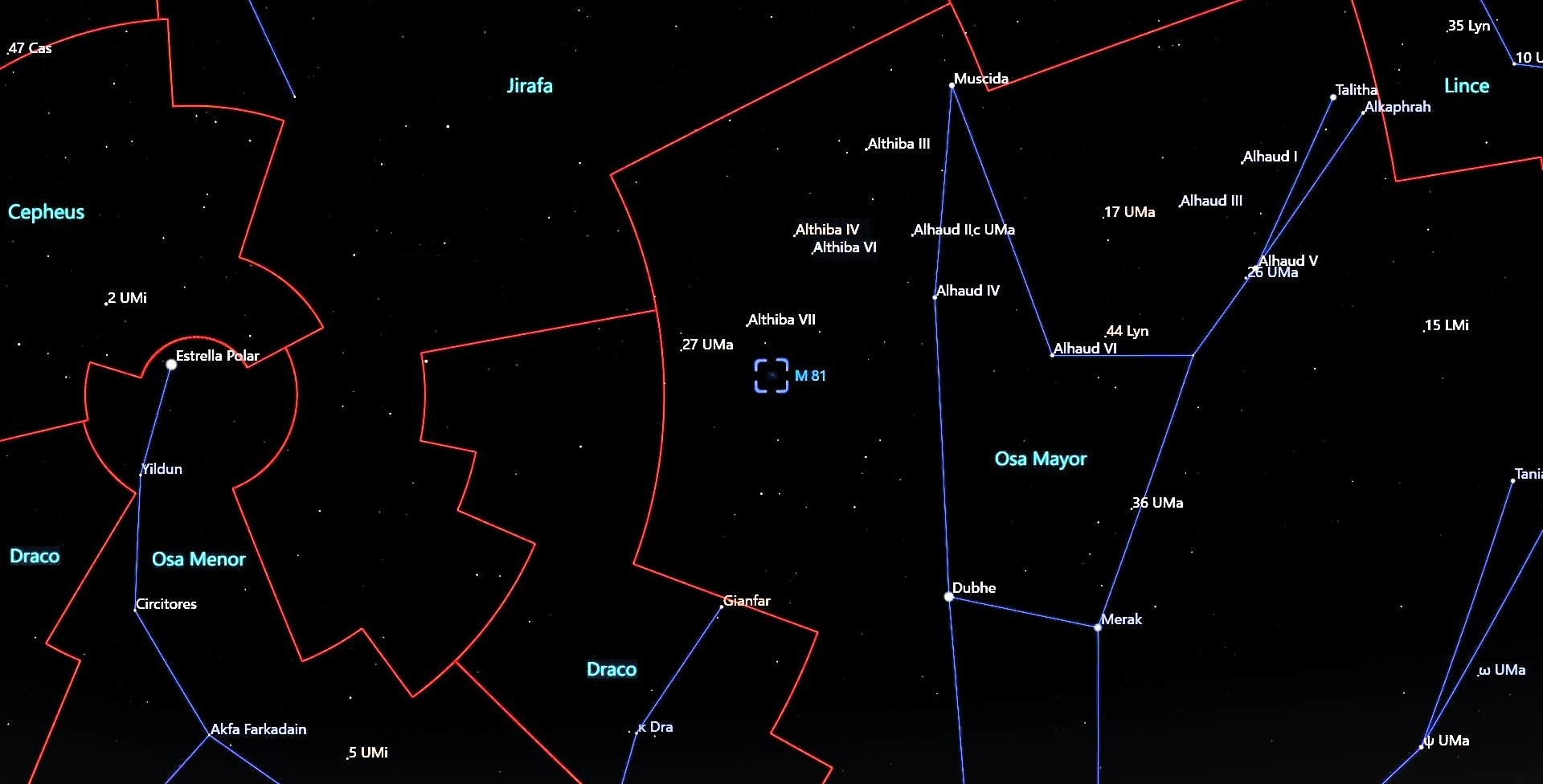Astronomical events of the month of January 2024
This year we will have many interesting astronomical events, highlighting the total solar eclipse on April 8, which will be visible in national territory. We wish you the best and in particular clear skies.
To start this year, in January we can go back to 1610 when the first telescope was used to see Jupiter and the Moon. We will also witness a copious meteor shower. Taking advantage of the sky conditions, we propose to take a quadruple challenge during the month: search for, and observe, the Manger, the Great Orion Nebula, the Leo Trio and the Bode galaxy. And of course they couldn't miss, to close the first month, the lunar anniversaries.
The first astronomical objects seen through a telescope
Can you imagine the excitement of observing, for the first time, through a telescope the gas giant, Jupiter, or our natural satellite, the Moon? On January 7, 1610, Galileo pointed his telescope, with only a few magnifications, towards Jupiter and discovered its four brightest moons, Jupiter I, Jupiter II, Jupiter III and Jupiter IV, which we know today as Io, Europa, Ganymede and Callisto. That same year, Galileo himself pointed his telescope at the Moon, describing a rough surface with craters, valleys and mountain ranges.
On January 18, during the first part of the night, we will be able to observe an approach of these two incredible celestial objects, in the direction of the constellation of Aries.
Ready to make a wish?
It is common, although incorrect, for meteor showers to be called meteor showers; It is also common, and equally wrong, for each meteor to be called a shooting star. However, if we manage to observe one, we usually make a wish. Whether it comes true or not, in any case, it is a very attractive astronomical phenomenon.
One of the most abundant meteor showers occurs during the first days of the year, the Quadrantids. Although they are active between December 12 and January 12, the maximum will be in the early morning of January 4. The maximum observable rate will be 120 meteors per hour. The minor body 2003 EH1 and comet C/1490 Y1 are responsible for this shower. The meteors appear to originate from the northern end of the Boyero constellation.
A classic item of the season
M44 or the Manger is an object that should not be missing from the January observation agenda. This young open cluster, with an estimated age of 400 million years, consists of about 200 stars, 577 light years from Earth, which can be found in the direction of the constellation Cancer.
It is believed that, due to its intense brightness, the cluster would have been identified in ancient times by the Romans and Greeks who called it the Manger (Praesepe). Already in the year 260 BC, Eratosthenes and Aratos observed it and described it as “a small fog.” Hipparchus in the year 130 BC, included it in his catalog of stars and called it “Cloudy Star.” Ptolemy mentions it as one of the seven “nebulae” in his Almagest. Galileo defines it as “nebulous” with more than 40 small stars.” Charles Messier added it to his catalog as M44, in 1769.
Due to its magnitude of 3.7, it can be located with binoculars or a small telescope, in the direction of the constellation of Cancer, towards the eastern part of the celestial sphere.
The greatest winter wonder
One of the best-known constellations is, without a doubt, Orion. This region is home to a good variety of celestial objects, ranging from molecular clouds, emission clouds, recently formed stars, very little evolved stars, highly evolved stars and a host of interesting celestial objects.
The spectacular Orion Nebula is an emission nebula, whose center resembles a butterfly, visible to the naked eye as a faint whitish spot in the middle of Orion's sword. Despite its brilliance, it is not known for sure who observed it for the first time, but it was already described by the French astronomer Nicolas-Claude Fabri de Peiresc in 1610, although it is known that Galileo was the first to describe the famous Trapezium of Orion. The Orion Nebula is a really large object in the sky, with an area of 66' x 60', that is, four times that of the Full Moon. Its linear diameter is 30 light years, and it is relatively close, just 500 parsec or 1270 light years away (1 parsec = 3.2616 light years). Charles Messier included it in his catalog, in 1771, as object number 42 (M42).
Three magnificent galaxies
The majestic Leo Trio or Triplet is made up of three spiral galaxies M65, M66 and NGC 3628. Galaxies M65 and M66 were discovered by Charles Messier, who cataloged them in 1780, describing them as “very faint nebulae without stars.”
M65 has the appearance of a “normal” spiral galaxy, type Sa, and appears not to have suffered much from the influence of its neighbors. It has a small, well-defined central core, and perfectly coiled spiral arms, as well as a very dense dust band. clear that separates the edge that faces us.
M66 is a spiral galaxy that has a poorly defined central bulge, classified as type Sb, with its spiral arms considerably deformed, containing a large amount of dust, nebulae and evidence of star formation. It is worth mentioning that in M66 some supernovae have recently been observed: 1973R, type II and magnitude 15.0, discovered in December 1973. 1989B, magnitude 12.2, discovered in 1989. And 1997bs, discovered in 1997, magnitude 17.0 and which was classified as special type II.
NGC 3628 shows a thick galactic disk divided by a dark strip of gas and dust, giving it the appearance of a hamburger, which is why it is popularly known as the Hamburger Galaxy.
The field of vision of the Triplet is about 500 thousand light years and is located at a distance of 35 to 45 million light years from us. It can be admired with binoculars or a small telescope, and if greater detail is desired, equipment with apertures of 30 or 40 centimeters are necessary.
A spiral galaxy
The galaxy M81, also known as NGC 3031 or the Bode Galaxy, named after Johann Elert Bode, who discovered it in 1774. M81 is a spiral galaxy located at a distance of approximately 12 million light years, with a magnitude of 6.9, which makes it very accessible for observation, along with its companion, the galaxy M82, which is about 150,000 light years away. It is located in the constellation Ursa Major and is relatively easy to find with binoculars or small telescopes. To begin to distinguish details of the spiral arms, telescopes with apertures greater than 30 cm are needed.
Moon Phases (Central Mexico Time)
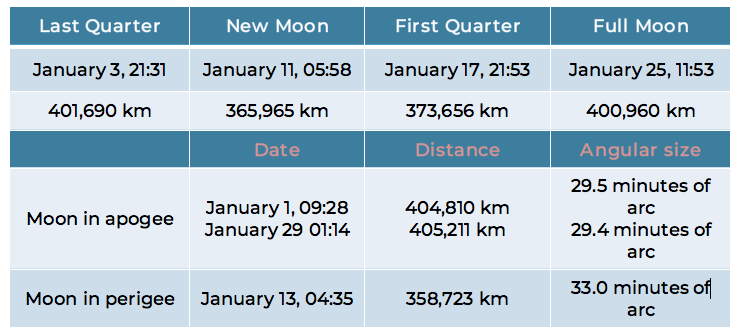
Watch the video of the month: https://youtu.be/hc_aDLYVlcw?si=dmmCeOpyMWYZ9H5e
Contacts:
Dr. Agustín Márquez Limón (amarquez@inaoep.mx), Coordinación de Astrofísica-INAOE
M. C. Tania Martínez (astronomiaplanetariokayok@gmail.com), Red de Planetarios del Estado de Quintana Roo
Dr. Raúl Mújica García, (rmujica@inaoep.mx), Coordinación de Astrofísica-INAOE y Noche de las Estrellas
Luis Enrique Erro # 1, Tonantzintla, Puebla, México, Código Postal 72840, Tel: (222) 266.31.00, difusion@inaoep.mx
This work is licensed under a Creative Commons Attribution-NonCommercial-NoDerivs 2.5 Mexico License.


